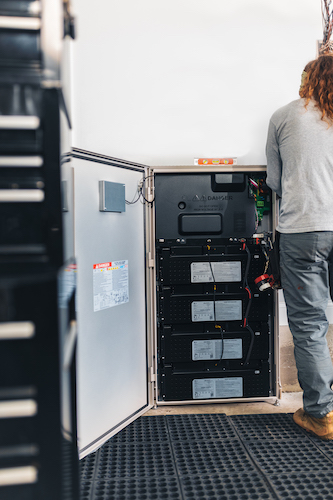Innovations in ESS Commissioning .... So long, headaches!
A poor cellular signal or a homeowner who can’t remember the password to their Wi-Fi may sound like something you’d see as a “First World Problems” meme. But for installers of energy storage systems (ESS), these realities often lead to long delays in installation and commissioning. In fact, long hours spent commissioning ESS — and return trips to address communication errors — are among the top headaches for many installers today.
It doesn’t have to be this way anymore.
As ESS becomes more in demand for homeowners who seek an alternative solution to the grid, installers will be relieved to find out that marked improvements in both design and technology will significantly reduce their time on site, taking what could be an all-day (or days) event down to a matter of an hour (or less).

Here are two primary ways that innovations in ESS have greatly improved the commissioning experience for installers:
- No internet, app, or laptop needed
At a job site, installers historically have had three options for commissioning:
First, they can hope that cellular service is strong enough to download an app to their cell phone and complete the commissioning tasks step by step. While this may work in a suburban neighborhood, many ESS customers tend to live more remotely, meaning cell phone service may be unreliable, at best.
Secondly, the installer can ask the homeowner, “What’s the Wi-Fi password?” If you’ve ever visited a relative’s house and waited for them to hunt down the paper where they wrote down the password five or more years ago, you know how unreliable this can be.
In the most cumbersome situation, installers will get on their laptop, connect to the cloud (assuming a connection is available), log in remotely, and then commission the system using their company’s cloud-based servers. Given that this method often takes four, six, or even eight hours to complete, it’s no wonder many installers say they can only do one install a day.
Fortunately, this strategy (if you can call “hope for a good connection” a strategy) is now a thing of the past. Newer energy storage systems have removed the need for internet, app, or laptop access to commission the unit. Instead, new ESS models come with a smart energy box featuring a large touch screen that allows the installer to power up, set up, and commission the machine without ever needing to connect to the internet.
With the added benefit of a step-by-step commissioning guide, usually contained in the installation manual, the guesswork is gone. Installers simply plug in, power on, push the appropriate buttons, and head to the next job. With the time saved on commissioning, installers can comfortably schedule more jobs, adding to their bottom line, and providing better service to their customers.
- Leave with confidence that no Return trips are required
Aside from spending all day on a job site, another reported headache for installers is the number of times they must return to complete the installation. Due to communication system interferences or firmware updates, an ESS installer traditionally returns to a job site at least once, if not multiple times, within days and even weeks of completing an install.
 Recent innovations in energy storage systems have made these return visits obsolete. Installers can now leave a job site confident that their work is completed, and there will be no future disruption to their schedule in order to get the newly installed system operational.
Recent innovations in energy storage systems have made these return visits obsolete. Installers can now leave a job site confident that their work is completed, and there will be no future disruption to their schedule in order to get the newly installed system operational.
It all starts with putting the power back in the homeowner’s hands…literally.
A savvy, energy-smart homeowner investing in an ESS wants to monitor the performance of their new technology. They want to better understand how they use energy in their house, and improve their utilization to be more efficient, and reduce their energy costs.
Many ESS brands help the homeowner on this journey via a smartphone app that provides all the data needed to be more energy savvy. The app allows the homeowner to program the ESS to suit their needs and schedule, while monitoring and maintaining other home devices and appliances. Instead of immediately calling the installer when a question arises, the homeowner can log into their app for a complete overview of their energy picture.
From an installer’s perspective, the app serves an even greater purpose — firmware updates. How frustrating is it to install a new ESS, get it commissioned, and be ready to head out the door only to discover that a firmware update is required? We’ve already talked about unreliable internet connection issues for installers. Imagine having to wait hours for a firmware update to download. Not only does this disrupt the installer’s schedule and bottom line, but it adds an extra level of frustration for the homeowner wanting to get on with their day.
Some ESS manufacturers allow firmware updates to be pushed directly to the homeowner’s app, triggering an automatic update of the ESS. Once the installer helps the homeowner register their ESS within the app, the installer can be on their way, confident in a job well done.
And that’s really what it’s all about — helping to get the job done quickly and efficiently. In addition to saving time and money, installers will benefit from the referrals of happy customers who took control of their energy usage.
Chris Canfield is Director of ESS Sales at LG Electronics USA.
LG Electronics USA | www.LG.com/ESS
Author: Chris Canfield












